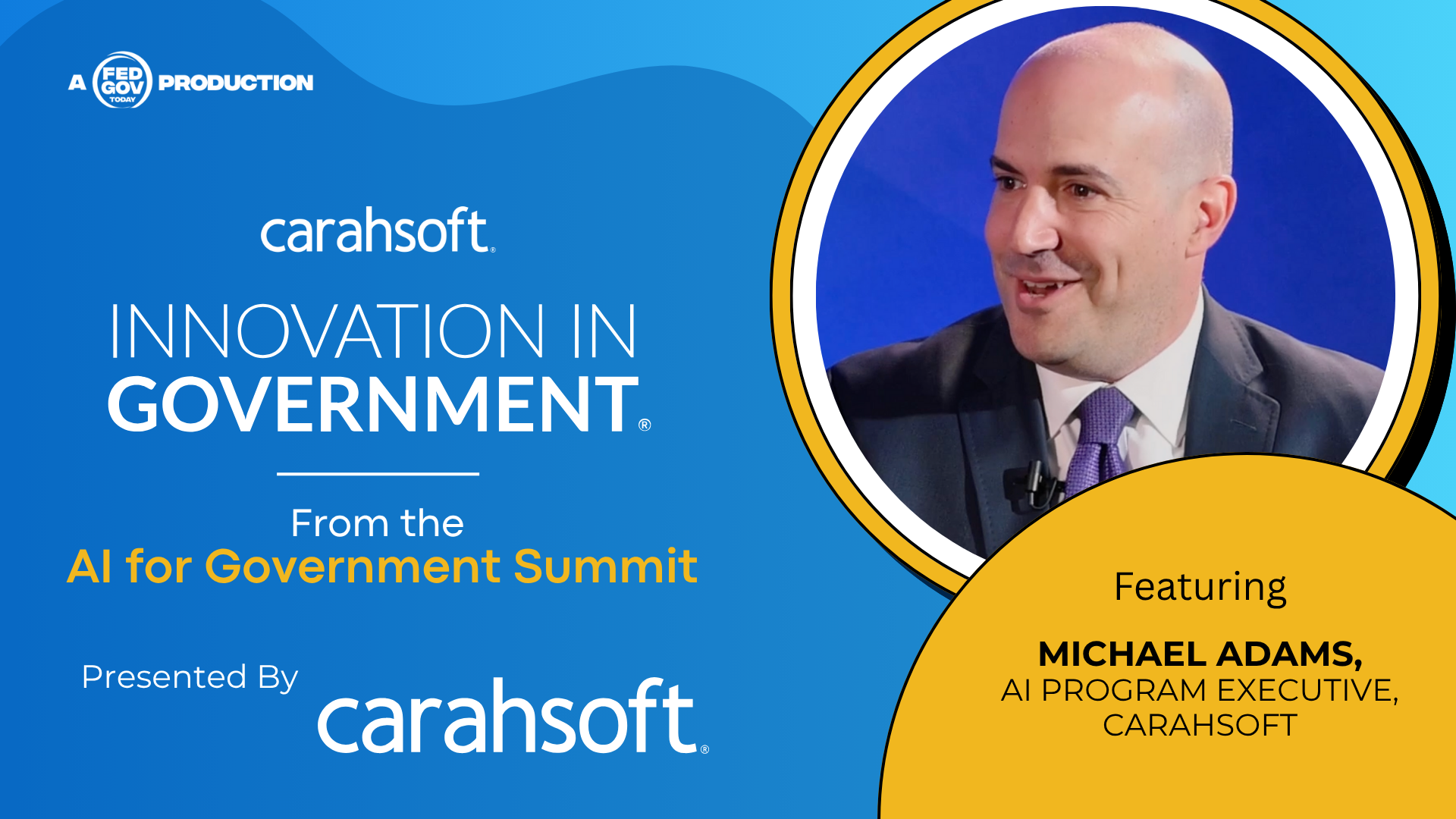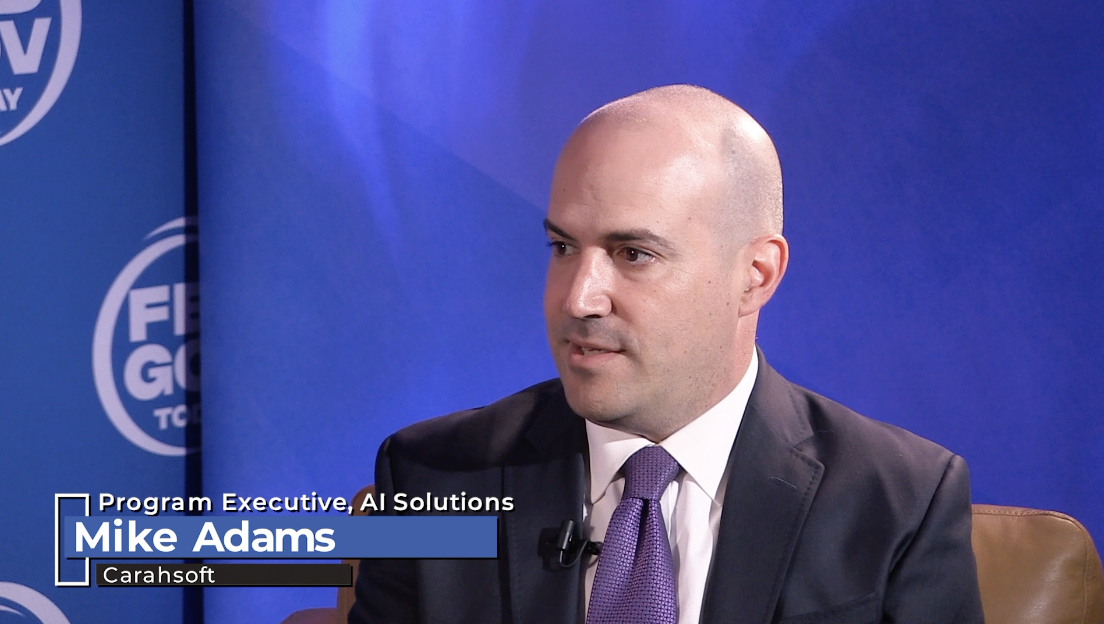Original broadcast 6/11/25
Presented by Carahsoft
When the topic is artificial intelligence, “mindfulness” isn’t the first word that usually comes to mind. But for Dave Hinchman, Director of IT and Cybersecurity at the Government Accountability Office (GAO), it might be the most important. At the AI for Government Summit, Hinchman made a compelling case for why the federal government must approach AI infrastructure with more deliberation—and a deeper understanding of what transformation really means.
 GAO has spent decades auditing large-scale technology programs across the federal enterprise. From cloud migrations to ERP rollouts, Hinchman and his team have seen how major initiatives can falter when agencies don’t clearly define their goals. That experience now informs GAO’s approach to artificial intelligence. “We’ve got a pile of reports as high as the ceiling showing what happens when agencies move forward without really thinking about where they’re going,” he said.
GAO has spent decades auditing large-scale technology programs across the federal enterprise. From cloud migrations to ERP rollouts, Hinchman and his team have seen how major initiatives can falter when agencies don’t clearly define their goals. That experience now informs GAO’s approach to artificial intelligence. “We’ve got a pile of reports as high as the ceiling showing what happens when agencies move forward without really thinking about where they’re going,” he said.
Hinicman’s call for mindfulness isn’t about slowing down. It’s about being intentional. He urged agencies not to deploy AI for AI’s sake, but to start with a clear understanding of what they’re trying to achieve—and how AI will impact operations, service delivery, and governance. “AI isn’t just a tech upgrade,” he explained. “It changes how agencies do business. It changes how they interact with citizens. It changes how they think about workforce, security, and infrastructure.”
At its core, Hinchman’s argument is that the government must not repeat the mistakes of past IT initiatives—where solutions were acquired before problems were fully understood. Agencies need to ask the right questions before they commit resources. What processes are they trying to improve? What risks are they introducing? And what outcomes do they want to measure? Too often, he said, those questions are treated as afterthoughts rather than prerequisites.
Part of the challenge is that government’s AI journey is still in its early stages. While agencies are eager to embrace the technology, most are still figuring out how to implement it at scale. GAO is evolving too—shifting from retrospective audits to what Hinchman called “real-time monitoring,” working alongside agencies as they experiment with AI to assess progress, identify pitfalls, and promote best practices.
That proactive approach is critical, especially as the technology evolves rapidly. AI isn’t a static tool; it’s a dynamic system that requires constant calibration. Hinchman emphasized the need for continuous testing, validation, and oversight—what he called “evergreen governance.” This includes not only tracking performance metrics but also ensuring that models remain aligned with agency goals and do not drift into biased or unreliable behaviors.
Infrastructure planning is another focal point. AI requires not only software but substantial hardware and energy resources. Hinchman cited a startling example from the state of Texas, where officials project a 50% increase in energy consumption over the next five years just to support AI-powered data centers. If states are grappling with that level of demand, federal agencies must start preparing now.
 Fortunately, cloud technologies offer a path forward. Hinchman acknowledged that the cloud has opened up new possibilities for flexible, scalable infrastructure. Unlike traditional IT environments, which required rewiring buildings and purchasing physical servers, today’s cloud platforms allow agencies to expand capacity quickly and efficiently. But that flexibility also brings complexity—and the need for skilled planning and oversight.
Fortunately, cloud technologies offer a path forward. Hinchman acknowledged that the cloud has opened up new possibilities for flexible, scalable infrastructure. Unlike traditional IT environments, which required rewiring buildings and purchasing physical servers, today’s cloud platforms allow agencies to expand capacity quickly and efficiently. But that flexibility also brings complexity—and the need for skilled planning and oversight.
When asked whether existing IT best practices still apply in the age of AI, Hinchman’s answer was clear: “Absolutely.” Whether agencies are building data centers or deploying neural networks, the fundamentals still matter. That means developing executive sponsorship, managing organizational change, ensuring stakeholder buy-in, and choosing the right partners. “It’s not about the tech—it’s about the process,” he said.
Governance is perhaps the thorniest issue. With little federal legislation in place, agencies are relying on a patchwork of policies, executive orders, and internal guidance to shape their AI strategies. Hinchman noted that this is reminiscent of the current state of cybersecurity regulation—a fragmented system where agencies, vendors, and states often work at cross purposes. He warned that unless AI governance is addressed holistically, the same disjointed, duplicative, and sometimes conflicting rules could emerge.
There’s been some discussion in Congress about pausing state and local AI regulations for a period of time while federal standards are developed. Hinchman didn’t take a position on the specifics but made it clear that the stakes are high. “We don’t want to end up with the same mess we have in cyber,” he said.
Speed, ironically, is both a strength and a risk. AI is developing so quickly that agencies are often playing catch-up. While some progress is exciting, Hinchman cautioned that federal systems are not built for high-velocity change. “The government hasn’t historically done speed well,” he said. The risk is that technology races ahead of the policies, protections, and controls designed to ensure it serves the public interest.
Even so, Hinchman remains optimistic. With thoughtful planning, clear governance, and mission-first execution, he believes agencies can embrace AI safely and effectively. But it won’t happen by accident. “We need to be mindful,” he concluded. “Because how we do this now will define how government works for the next generation.”
Key Takeaways:
-
Agencies must align AI with mission outcomes—not deploy tech for tech’s sake.
-
Governance, infrastructure, and workforce planning are critical for sustainable AI.
-
GAO is evolving toward real-time monitoring to support responsible AI growth.
This interview was featured in the program Innovation in Government recorded on location at the Carahsoft AI for Government Summit. To watch the full program, click here.



